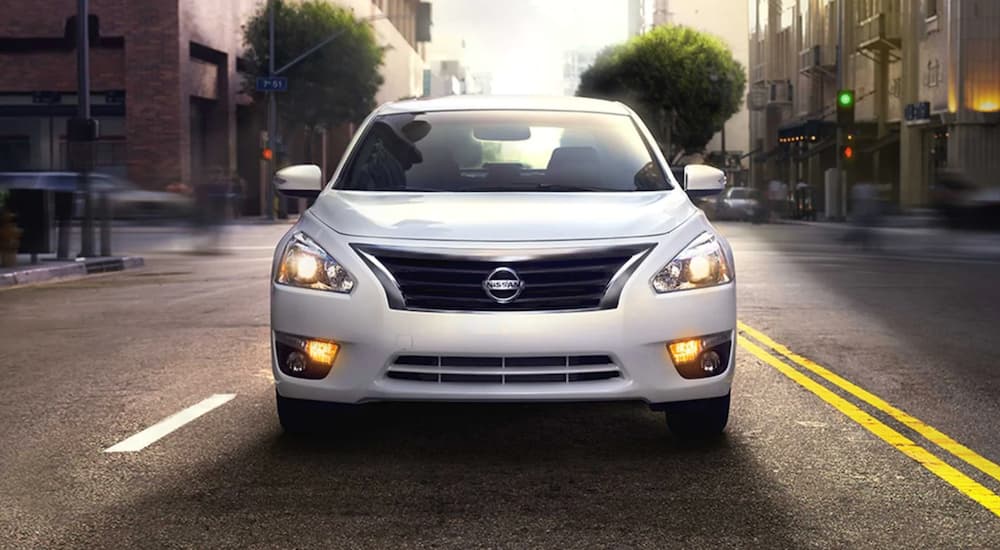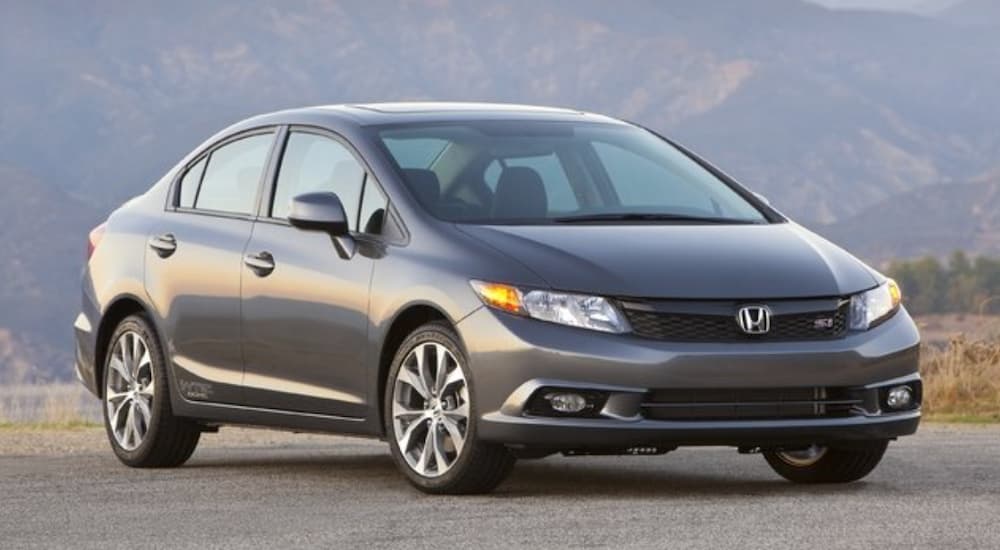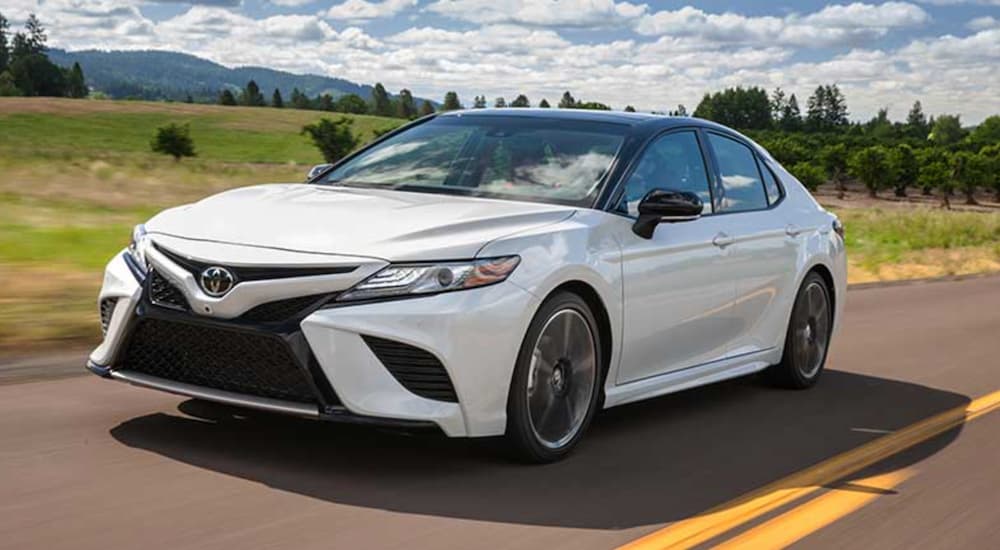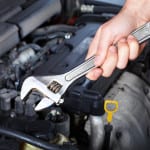If one thing’s become clear in recent years, it’s that simply existing is becoming more expensive with each passing day. With going to the grocery store costing more than ever before, niceties like transportation become a bigger strain on our budgets. This is a time in which a new vehicle is an impossible idea for many of us, and instead, the temptations of a used car dealer are all the more appealing. And, to be honest, there’s nothing wrong with that—a good used car dealership that treats its customers well and offers a selection of pre-owned models in great shape can be the perfect solution to getting a car on a tight budget.
That being said, we all know that there are some inherent risks when it comes to choosing a used vehicle, and it often feels like those risks become more substantial with older cars. While that’s true, it doesn’t mean that going with an older car is an absolute loss; there are also clear advantages. Today, I’m going to take you through some of the biggest benefits and drawbacks of choosing not just a used vehicle but an older used vehicle. I can’t help you with every consideration while looking at used cars, but I can help you consider some things that you might otherwise overlook.
Benefit #1: Saving Money
This is the obvious one, right? So, I might as well start here. Unless it’s a collector’s item, a very niche model, or something with a specific fan base (like a certain model that’s great for turning into a souped-up aftermarket beast), an older car will cost you less than a newer one. The farther back you’re willing to go, the more you’ll typically save on the price of your next ride. There’s a certain point where you’ll start running into diminishing returns in this regard, but generally, if you want something for less than $10k, an older vehicle from 10 years ago or so is likely to be your best bet.
Benefit #2: Skipping Initial Depreciation
Alongside the fact that you’ll pay less for an older vehicle, you’re also likely to retain more of its value—assuming you don’t intend to drive it into the ground. It’s well established that the biggest period of depreciation on a vehicle is its first three to five years. Some models can lose 20% of their value just in the first year after they’re sold new and around 50% of their value in the first five years. That’s why you’re paying less when you buy used, after all. While an older car will still depreciate in value as you drive it, the depreciation won’t typically be as dramatic as that initial loss.
Benefit #3: Lower Insurance Rates
In general, other factors can impact your car insurance rates more than your vehicle’s age or model year, but those details can still come into play. The biggest deciding factors are typically your age and gender, your driving record, and the make and model of the vehicle you’re looking to insure. That being said, new and high-end models tend to have higher insurance rates than budget-friendly vehicles and older cars. This is just one part of the bigger equation, but it’s worth considering.
Benefit #4: Potential Ease and Low Price of Repairs
This is absolutely not guaranteed and depends a great deal on what make and model you’re looking at, but it’s a potential benefit (it could be a drawback as well, so see below). A lot of older cars are very inexpensive to maintain, including regular service and replacement parts, but this depends on the make and model. A Toyota Corolla from 10 years ago is typically cheap to keep in good shape and easy to find replacement parts for, while a BMW from 10 years ago will be far from inexpensive to service and repair. You should do some research to see what expected costs you should be ready for with any particular model before you pull the trigger.
Benefit #5: Learn From Other Drivers’ Mistakes
This is one of my favorite advantages of an older car, largely because I’m a big nerd who enjoys doing research. The longer a vehicle is on the road and available to drivers, the more information there is about it. It’s hard to find real reviews from owners if you’re looking at something like a Tesla Cybertruck. On the other hand, if you want to know what it’s like to own a 2010 Toyota Camry, you’ll find thousands of drivers who can give you first-hand info about what to expect. That’s absolutely invaluable and makes a huge difference when it comes to knowing about issues with engines, transmissions, or other parts of specific models.
Drawback #1: Concerns With Reliability
It’s not all sunshine and lollipops with older cars, however, and there’s an undeniable potential for an older vehicle to have reliability issues. If someone drove a Chevy Silverado 1500 hard for the last decade and put 200,000 miles on it, then how much life it has left in it largely depends on how well they cared for it. This is why it’s vital that you take your time and learn as much about different makes and models as possible to see what kind of common issues might come up and make sure you get a vehicle in the best shape possible.
Drawback #2: Lack of Modern Features and Tech
If you like things like flashy infotainment displays, advanced safety tech, and incredible sound systems in your vehicle, then an older car might leave you wanting. Sure, you can probably find a vehicle from a decade ago with a fantastic aftermarket sound system in it but don’t expect a lot of other modern amenities. If you have a CD collection that you want to use in your car, then this isn’t a problem, but if you want the latest navigation software and automatic emergency braking, then you’re probably out of luck with a vehicle from 15 years ago.
Drawback #3: Higher Cost of Parts and Repairs
This is the other side of the parts and maintenance coin: they can potentially be more expensive than with a newer vehicle. Like I said before, it almost entirely depends on the make and model that you’re looking at. Something like a Mercedes-Benz S-Class from 15 years ago will typically be pretty expensive to care for and maintain. Further, if you have a car from the early 2000s, then you might struggle to find replacement parts for it. This is where doing your homework ahead of time is crucial, which brings us to…
Drawback #4: More Research Necessary When Shopping
Car shopping should always involve some research, but buying an older car can seriously amplify that. Some older models, like a Toyota Camry or Honda Civic from a decade ago, can be fantastic picks that save you a ton of money and give you another decade of reliable performance. But a Volkswagen from the same year could have known issues, or you might end up with a 2008 Civic that’s known for having issues with cracked engine blocks. One of the best ways to avoid these things is to do your research––a lot of it––to know as much as possible before signing for any vehicle. If this is something you enjoy, then that’s not a problem; otherwise, it could be a lot more work than you’re ready for.
Is an Older Vehicle Right for You?
At the end of the day, only you can decide if the likely benefits of buying an older used car outweigh the potential drawbacks. Overall, however, I think they do, as long as you’re willing to put in the work to make sure you know what you’re in for with an older vehicle and choose one that’s well-known for reliability and easy upkeep. Toyota and Honda models are often safe bets—though, again, some years can have issues—along with Nissan and Subaru, particularly if you want all-wheel drive. Just make sure that any vehicle you pick has been well cared for, with proper service and maintenance performed as instructed by the manufacturer. As long as that’s the case, then an older car can be a great way to save money today and in the long run.






